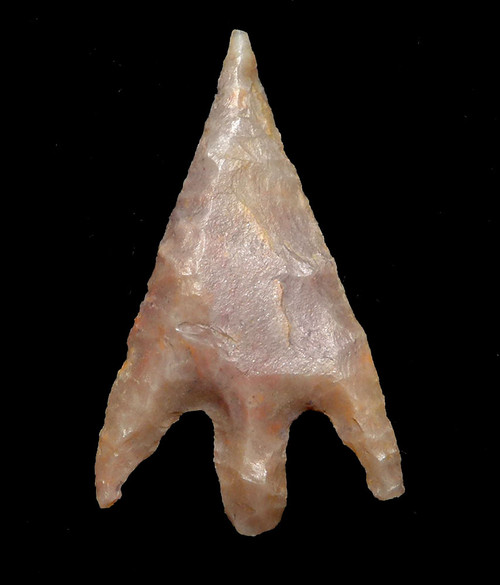Product Description
We have been obsessively collecting the finest African Neolithic Capsian arrowheads for over 20 years and this specimen comes from a small, select group we have been holding onto for the duration of two decades. We have been to the source in the Sahara, scoured literal buckets and barrels of tens of thousands of arrowheads each year, for many years. Over the past decades, we have also purchased amazing private collections in America and Europe. In all this time, we would set aside the RAREST OF THE RAREST arrowheads of this Neolithic culture, and it is now time for us to sell some from this private, ultra-rare stash. The collection is small and limited and no two are alike. Each represents the highest degree of workmanship that we have ever seen. This is one of those precious specimens from those efforts. The sites where arrowheads like this were once found, have been entirely picked clean for years. In over the last two decades, poor safety and security in the desert, as well as changing laws in North Africa, prevent any new collecting or discoveries to be made, making these artifacts increasingly desirable and valuable.
This is a Capsian Neolithic projectile point called a TRANSVERSE BARBED TRAPEZIUM arrowhead. IN 23 YEARS, THIS IS THE ONLY ONE WE EVER SAW. ONLY ONE OTHER ONE CAN BE FOUND IN PUBLICATION BUT IT IS FAR INFERIOR TO THIS EXAMPLE. Lunates and transverse projectile Capsian Neolithic points were believed to be "bleeding" arrowheads for use on humans and large game. It is theorized they also may have had a poison applied to the cutting edge. Their broad cutting blade edge would have cut a large wound and if hit in a vital area, caused death by bleeding within a reasonable period of time. In hunting, the game would have been followed until it succumbed to the hemorrhaging. We have seen many ordinary crescent-shaped and trapezoid transverse points but NEVER one that was flaked WITH THE BARBS. The feature is unique only to this rare specimen - even major publications of African Neolithic artifacts never has shown an example like this. The flint has patinated pure white. Original mineral deposits are intact and deep in the flake hinge fractures and micro-crevices - traits ONLY found in AUTHENTIC specimens.
If you collect rare arrowheads, especially from the Capsian Neolithic Culture, this is one arrowhead you will likely never see again, making it a Holy Grail addition to the most advanced collections.
HISTORY
CAPSIAN TRADITION arrowheads have been found on exposed African Neolithic sites in the Sahara Desert in Northwest Africa. They were made by African Neolithic humans (Homo sapiens sapiens) between 10,000 and 4,700 years ago.
These arrowheads are similar to African Neolithic projectile points known to have been used in human conflict. A late Pleistocene graveyard was discovered at Jebel Sahaba, north of Wadi Halfa in Sudanese Nubia. These burials date from 14,000 to 12,000 years ago. Many people were buried there that had fallen victim to violent deaths with the bodies having been killed by microlithic weapons and small arrowhead projectiles. One man had 110 artifacts associated with his skeleton which had entered his body as stone barbs and points of projectiles. Two of the projectiles were still embedded in his skull.
 US DOLLAR
US DOLLAR
 EURO
EURO
 AUSTRALIAN DOLLAR
AUSTRALIAN DOLLAR
 CANADIAN DOLLAR
CANADIAN DOLLAR
 POUND STERLING
POUND STERLING














